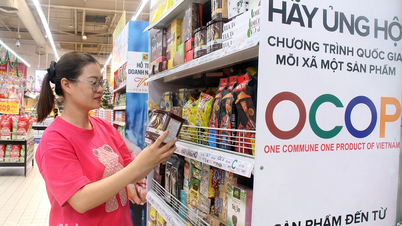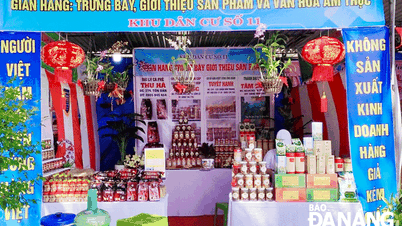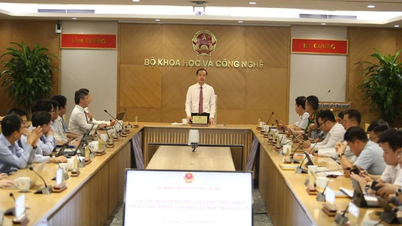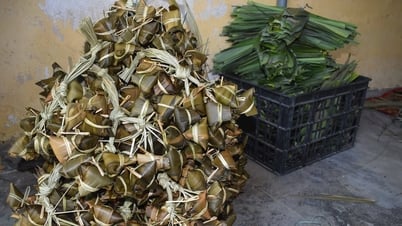Lesson 1: Cashew processing "factory" in trouble
According to the Vietnam Cashew Association (Vinacas), Vietnam is currently the world's largest "factory" for processing raw cashews, exporting to major markets such as the US, Europe, China, etc. However, about 90% of the raw materials for processing come from imports. This is a major obstacle to the sustainable development of the cashew processing and export industry, especially in the current volatile market context.
Vietnam currently accounts for nearly 80% of the world's cashew kernel exports; the amount of raw cashews processed by Vietnamese cashew factories accounts for 60% of global raw cashew output. In 2023, the country's cashew exports will reach more than 644,000 tons, with a turnover of more than 3.64 billion USD, up 24% in volume and 18% in turnover compared to 2022.
"Capital" of things in trouble
Binh Phuoc, the cashew capital, is the most vibrant cashew production and trading place in the country with 2,793 processing facilities, small and medium enterprises, micro enterprises, and production complexes with more than 500 members participating in activities. This is considered the world's number one cashew processing center, with a cashew processing capacity of 500,000 tons/year. Binh Phuoc province is also the first locality to be granted a Certificate of Geographical Indication Registration for cashew products by the Intellectual Property Office in March 2018.
About a month ago, the price of raw cashew nuts increased sharply, and cashew businesses were surprised by the market fluctuations. With nearly 20 years of experience in producing and processing cashew nuts and salted roasted cashews, Kim Yen cashew processing facility (Phuoc Long town) has recently been quite confused because the price of cashew nuts has increased dramatically every day. Ms. Phung Thi Kim Yen, representative of the processing facility, said: During the cashew season, when people harvest, the selling price is only 25,000 VND/kg, but in mid-June 2024, the price of raw cashew nuts in Vietnam has reached about 40,000 VND/kg, while the price of imported raw cashew nuts has increased "dizzily" even more. Although the demand for raw cashew nuts in the market is very large and the price of cashew nuts is high, the supply is also very scarce, causing cashew processing businesses to fall into a state of anxiety.
Vietnam currently accounts for nearly 80% of the world's cashew kernel exports; the amount of raw cashews processed by Vietnamese cashew factories accounts for 60% of global raw cashew output. In 2023, the country's cashew exports will reach more than 644,000 tons, with a turnover of more than 3.64 billion USD, up 24% in volume and 18% in turnover compared to 2022.
According to Mr. Bach Khanh Nhut, Permanent Vice President of Vinacas, the domestic supply of raw cashew nuts currently only meets 10-12% of the export processing needs of enterprises, so the import volume is up to 88%-90%. However, at the peak in May and June 2024, the imported raw cashew nuts were not delivered according to the contract or the price increased many times, causing difficulties for domestic raw cashew nut importing enterprises, with the risk of heavy losses. At times, exporting enterprises in West Africa pushed the price of raw cashew nuts up by more than 40-50% compared to February and March 2024, to 1,500-1,700 USD/ton.
Regarding the cause of this situation, Mr. Bach Khanh Nhut said: Cashew trees are very drought-resistant, but this year, the El Nino weather phenomenon is more special, so it has severely affected cashew output in all countries around the world. In Vietnam, according to information from businesses, cashew output in 2024 decreased by about 20%. In Ivory Coast - a major supplier of raw cashews to Vietnam - cashew output decreased by 20-25%. Therefore, in May 2024, Ivory Coast issued a ban on raw cashew exports for the first time to ensure sufficient supply for domestic processing enterprises. It was not until June 10, 2024 that Ivory Coast ordered normal exports to resume, so within 1 month, raw cashew prices increased abnormally. This put Vietnamese cashew nut exporting enterprises in a difficult position. Specifically, although they cannot import raw cashews for processing, contracts with partners have been signed, so cashew nut buyers are forcing Vietnamese businesses to deliver goods at all costs at the correct contract value.
"According to statistics, at that time, a business's exported cashew nut container suffered a loss of 500 million VND to 1 billion VND. For a large business, each month it exports about 10 containers, sometimes up to 30-40 containers. Therefore, many businesses do not dare to calculate the loss figure, trying their best to negotiate with buyers and wait for the price to drop before delivering the goods. However, this is difficult to do because when purchasing Vietnamese goods, partners also sign contracts with supermarket systems, so they cannot lose their reputation and brand, nor accept being fined by supermarkets for contract violations. Therefore, never before has a Vietnamese cashew processing and exporting business had to "suffer" as fiercely as in the past time," Mr. Nhut added.
"Bottleneck" of raw material sources
Deputy Director of the Department of Crop Production ( Ministry of Agriculture and Rural Development ) Nguyen Quoc Manh said: From 2008 to 2013, our country's cashew productivity always remained low at under 10 tons/ha. Since 2014, thanks to the cashew intensive farming program, cashew productivity has improved and reached 1.2 tons/ha. In 2016 and 2017, cashew productivity decreased due to the strong impact of drought, unseasonal rains and diseases. Cashew productivity in 2023 reached 1.22 tons/ha, an increase of 1.08 tons/ha compared to 2022 and a decrease of 1.3 tons/ha compared to 2021. Including the above period, Vietnam's cashew productivity increased by 5.7%/year, reaching an average yield of 1.25 tons/ha, still low compared to the set target of 15-20 tons/ha. During the 2000-2020 period, Vietnam's raw cashew output grew by an average of 8.1% per year, with the highest cashew output in the 2021-2022 crop year at 399.3 thousand tons.
In addition to depending on external supply due to low domestic raw cashew output, Vietnam's cashew processing activities are also facing great risks as imported supply is gradually shrinking. Information from Vinacas shows that currently, major cashew producing countries in the world such as Ivory Coast and Cambodia are all having strategies to invest in processing, limiting raw exports to increase added value. Meanwhile, increasing domestic raw cashew output is also facing numerous challenges.
In fact, the cashew area is shrinking because farmers are switching to other crops such as coffee, pepper, etc.; the cashew gardens that are in production are mostly many years old, the trees are aging, so the productivity and output have decreased. Although the Department of Crop Production has chaired and coordinated with the Cashew Research and Development Center to develop a process for replanting cashew trees to adapt to climate change, classify cashew gardens, develop plans and take steps to have appropriate renovation directions, the effectiveness is still unclear.
Currently, there are not many cashew varieties that have been selected and put into production. For new varieties that have been put into production, localities do not have policies to support replanting, so people do not dare to do it because the replanting period will not yield a harvest, farmers have difficulty paying for living expenses due to lack of income. The implementation of rolling replanting suitable to the capacity of each household and each region so as not to affect the lives and total cashew output has not been widely and effectively implemented.
For these reasons, it is currently extremely difficult for our country to be self-sufficient in raw cashew sources for processing and exporting cashew kernels. In the immediate future, in the third and fourth quarters of 2024, it is forecasted that the cashew industry will face major obstacles due to continued shortage of raw materials, and this situation may even last into the first quarter of 2025.
(To be continued)
The cashew growing area nationwide in 2023 will reach 300,000 hectares, a decrease of more than 22,000 hectares compared to 2022, of which the harvested area will be more than 285,000 hectares, accounting for 95.1% of the total area. The cashew growing area concentrated in the provinces of the Southeast region is 186,100 hectares, accounting for 62.0% of the country's area, followed by the Central Highlands with an area of 85,100 hectares, accounting for 28.4% of the country's area. In 2023, the country's cashew output will reach 347.6 thousand tons; while the amount of raw cashews imported by Vietnam in 2023 will be about 2.8 million tons, mainly imported from Africa and Cambodia.
(Source: General Statistics Office)
Source: https://nhandan.vn/nganh-dieu-truoc-thach-thuc-giu-vung-ngoi-dau-bang-post818691.html






![[Photo] A delegation of 100 journalists from the Vietnam Journalists Association visits the soldiers and people of Truong Sa island district.](https://vphoto.vietnam.vn/thumb/1200x675/vietnam/resource/IMAGE/2025/5/30/0984a986227d4e988177f560d2e1563e)
![[Photo] Journalists moved to tears at the Memorial Service for the soldiers who died in Gac Ma](https://vphoto.vietnam.vn/thumb/1200x675/vietnam/resource/IMAGE/2025/5/30/9454613a55c54c16bf8c0efa51883456)






















![[Photo] Prime Minister Pham Minh Chinh attends the event "Digital transformation of the banking industry by 2025"](https://vphoto.vietnam.vn/thumb/1200x675/vietnam/resource/IMAGE/2025/5/29/0e34cc7261d74e26b7f87cadff763eae)
























































Comment (0)